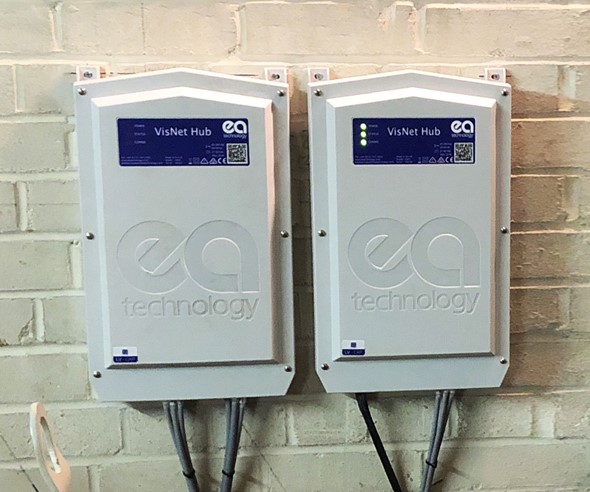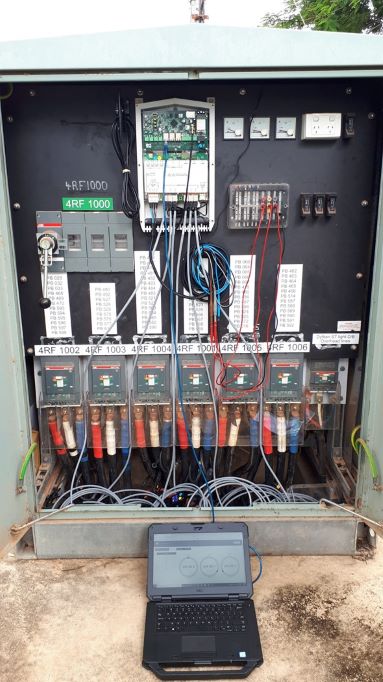
Locally, grid constraints are increasing the cost and/or the timescales for communities or businesses to connect their low carbon projects, with examples such as:
• Businesses on some industrial estates being unable to add generation (e.g. PV on roofs) without the need for limitation.
• Constraints for new generation in rural areas due to capacity allocations for existing projects.
• Communities unfamiliar with how to use their energy to maximise their generation, reduce constraints and minimise costs
20000 Total freed-up capacity (kWp) 20000
85 Enterprises receiving support
5 Innovative new products created
£654K Marches LEP Funding (Total Project cost £1,032,000)



Targeted to focus on areas of community interest and areas prioritised for inward investment, the project will improve the data surrounding the LV network in the Marches. Once in place, the project will share data, which will help to:
• Locate spatial and temporal capacity constraints, to inform energy generation and storage investors.
• Support energy consumers, including those in fuel poverty, on opportunities for providing demand side measures, e.g. reduced EV charging or deferred space heating.
• Facilitate the creation of a local energy market for trading variable loads with variable generation within the agreed area.
Grid monitoring is a critical enabler in the transition to decarbonised energy, particularly as more energy vectors (heat and transport) switch over from fossil fuels to electricity.
Monitoring has existed on the higher voltage networks for some years, and increasingly this data is shared with the outside world through data portals and platforms. The LV network remains one part of the system where grid constraints are more opaque, mainly as >99% of these circuits are unmonitored. The provision of monitoring at this voltage provides a clear understanding of what is happening in real-time, plus can be used as a tool to:
• Identify when faults have happened or are likely to happen to improve supply quality to connected customers.
• Understand how demand is changing on a network so that flexibility signals can be sent to other actors.
• Quantify issues such as extreme temperatures, and their impact on demand and the life expectancy of the assets.
• Assess when strategic reinforcement may be required.
The Marches Local Enterprise Partnership has now ceased trading and transferred all its functions to Shropshire Council working with Telford & Wrekin Council and Herefordshire Council, in line with the UK Government's plans for devolution.
The Marches LEP was established in 2011 and hands over an impressive legacy from its 13-year life. In that time the LEP invested over £196m in projects across the Marches, securing in excess of £100m of match funding and supported more than 66,000 business interactions.
The schemes supported have made tangible differences to local communities, increasing skills, creating jobs and improving the physical appearance of many towns.
We would like to thank all the LEP Board Members who have given their time freely over the life of the LEP, as well as all the staff who worked for the LEP over the years. We also want to thank our delivery partners, local education providers and local, regional and national stakeholders who helped us achieve so much.
The Marches Growth Hub will continue to support businesses and will be managed by Shropshire Council, supported by Telford and Wrekin and Herefordshire Councils. Each of the three Local Authorities will also continue to provide direct business support locally. Details of this support will be available through the Marches Growth Hub website and from the Local Authorities directly. Website: www.marchesgrowthhub.co.uk | email: enquiries@marchesgrowthhub.co.uk.
The Marches Careers Hub will continue to be delivered and will be managed by Shropshire Council, supported by Telford & Wrekin and Herefordshire Councils. Website: www.marchescareershub.co.uk | email: info@marchescareershub.co.uk
For any queries about Getting Building Fund (GBF), Local Growth Fund (LGF) and Marches Investment Fund (MIF) projects supported by the Marches LEP please contact: gary.spence@shropshire.gov.uk
For any finance queries please contact: michelle.hodgkiss@shropshire.gov.uk
The solvent liquidation of the Marches LEP is being managed by the Evelyn Partners Limited. For any matter related to this please contact: Camilla.Mulholland@evelyn.com